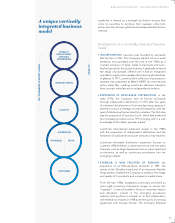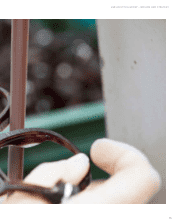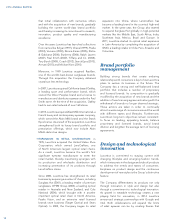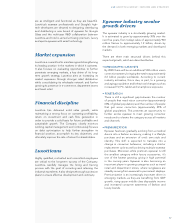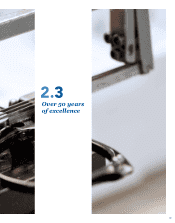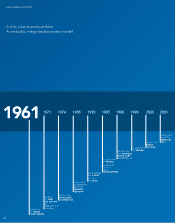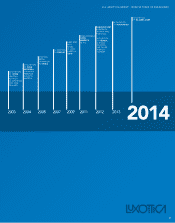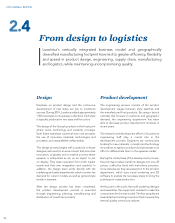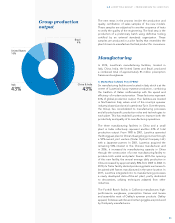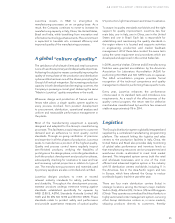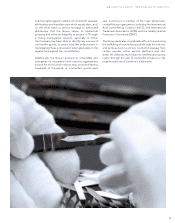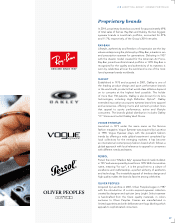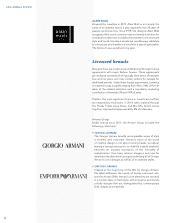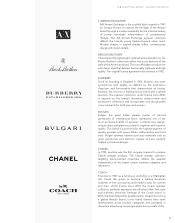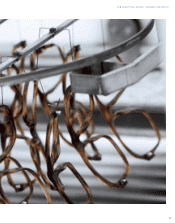LensCrafters 2014 Annual Report Download - page 25
Download and view the complete annual report
Please find page 25 of the 2014 LensCrafters annual report below. You can navigate through the pages in the report by either clicking on the pages listed below, or by using the keyword search tool below to find specific information within the annual report.
The next steps in the process involve the production and
quality certification of sales samples of the new models.
These samples are subjected to another sequence of tests
to verify the quality of the engineering. The final step is the
production of a preliminary batch using definitive tooling
certified by an external standards organization. These
samples are produced in a pilot facility that resembles the
plant chosen to manufacture the final product for consumers.
Manufacturing
In 2014, Luxottica’s manufacturing facilities, located in
Italy, China, India, the United States and Brazil, produced
a combined total of approximately 83 million prescription
frames and sunglasses.
Six manufacturing facilities are located in Italy, which is at the
center of Luxottica’s luxury eyewear production, combining
the tradition of Italian craftsmanship with the speed and
efficiency of modern automation. These factories represent
43% of global production output. Five facilities are located
in Northeastern Italy, where most of the country’s eyewear
industry is based, and one is located near Turin. Over the years,
the Group has consolidated its manufacturing processes
and allocated specific production roles and technologies to
each plant. This has enabled Luxottica to improve both the
productivity and quality of its manufacturing operations.
The three manufacturing facilities in China and a small
plant in India collectively represent another 43% of total
production output. From 1998 to 2001, Luxottica operated
the Dongguan plant in China’s Guangdong province through
a 50%-owned joint venture (Tristar Optical Company Ltd.)
with a Japanese partner. In 2001, Luxottica acquired the
remaining 50% interest in this Chinese manufacturer and
in 2006, it increased its manufacturing capacity in China
through the construction of a new manufacturing facility to
produce both metal and plastic frames. With the opening
of this new facility, the annual average daily production in
China increased by approximately 80% from 2005 to 2006. In
2010, its Tristar facility started producing plastic sun lenses to
be paired with frames manufactured in the same location. In
2013, Luxottica integrated into its manufacturing processes
a newly developed state-of-the-art plant, partly dedicated
to decorations, utilizing techniques adapted from other
industries.
The Foothill Ranch facility in California manufactures high-
performance sunglasses, prescription frames and lenses
and assembles most of Oakley’s eyewear products. Oakley
apparel, footwear, watches and certain goggles are produced
by third-party manufacturers.
Group production
output
Brazil
4%
United States
10%
China & India
43%
Italy
43%
2.4
23


